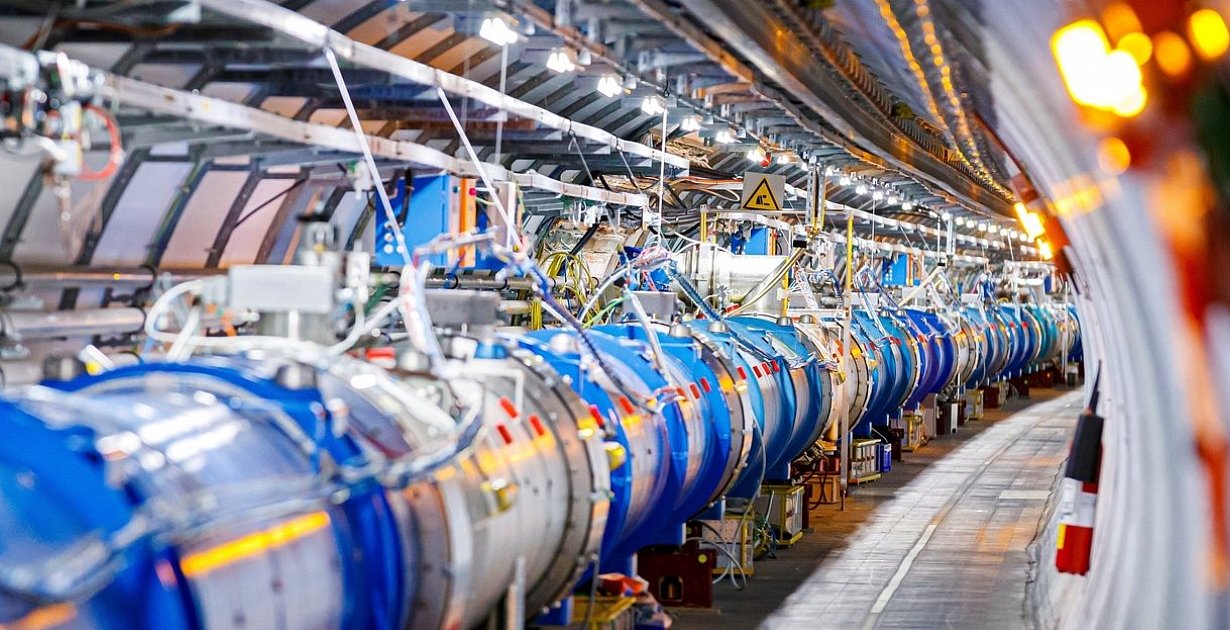The world’s largest particle accelerator, the LHC (Large Hadron Collider), has begun its usual winter break. This year, however, two weeks earlier than planned. Saving electricity is also common in research institutes such as the European Organization for Nuclear Research (CERN). Uptime will also be reduced in 2023. Many energy-intensive organizations are under pressure when it comes to energy costs. Scientific work can suffer as a result.
Because of the extended winter break, less data is being generated for research, says CERN’s director of research, Joachim Mneich. There, the French electricity company EDF requested a shorter operating time. That should greatly ease the system. In a full year of operation, the LHC consumes as much electricity as homes in a city of 300,000 people.
During its lifetime, the LHC generates about two billion collisions of protons per second. Physicists gain insights into the building blocks of matter from decay processes. Shorter runtime means fewer collisions. The loss cannot be compensated because the LHC and the instruments recording the data are at the limits of their current performance. Compared to the entire current four-year operating period, collisions are 20 percent lower this year and next, says Mnich.
The light has been turned off
But physicists think about the future. “If electricity prices remain high in the long term, this may mean that we have to reduce or extend the physics program over time,” says the research director. It will be checked in any other place where electricity can be provided. For example, a new residential area will soon be heated with waste heat from the energy expended. In addition, from the end of 2023, Cern buildings will be supplied with waste heat from the new data center.
German research institutions also have energy saving schemes. However, this is not so much about cutting down on trials and running systems as about savings on building blocks. Cooling and ventilation performance is reduced, building temperatures are lowered, lights are turned off, hot water supply is reduced or more photovoltaic systems are installed.
The Helmholtz Center in Berlin, for example, wants to continue operating the energy-hungry Bessy II X-ray source without interruption in the winter. The research there is said to be the basis for a safe and sustainable energy supply in the future, and therefore must continue. The goal is concepts for energy supply without fossil sources.
Maintenance and rebuilding phase
In one of the largest data centers in Europe in Garching near Munich, the Leibniz Data Center, it was checked whether it was possible to save energy by reducing the clock frequency of processors. “In effect, this means that individual applications compute more time on the supercomputer and ultimately consume more power,” says Dieter Kranzmüller, president.
At the GSI Helmholtz Center for Heavy Ion Research in Darmstadt, the accelerator is already in the planned maintenance phase. Also at the Max Planck Institute for Plasma Physics (IPP) in Garching, the power requirements for the large-scale experiment “ASDEX Upgrade” will be largely eliminated for the time being because they will be rebuilt in the next two years. According to the spokesperson, the second IPP experiment in Greifswald in Mecklenburg-Western Pomerania, “Wendelstein 7-X”, cannot be switched to economy mode, nor can the trial time be shortened in a meaningful way. However, it has been agreed with the network operator that in the event of bottlenecks, work and trial times will be converted to lower consumption times per day.
The Alfred Wegener Institute (AWI) in Bremerhaven does not assume that expeditions planned for next year will have to be cancelled. The AWI operates the research vessel “Polarstern,” which is in use on average more than 300 days a year, as well as other polar ships and aircraft. In this year and the next two, higher expenditures on fuel will continue to be covered by government grants or budget reallocations.

“Alcohol buff. Troublemaker. Introvert. Student. Social media lover. Web ninja. Bacon fan. Reader.”







More Stories
Is the wrong diet making you forget?
We can study it with a new telescope.
Education: Start studying astronomy at school.